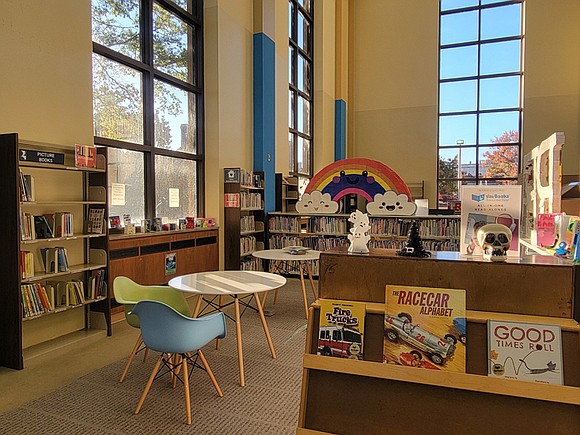‘Reading Rainbow’ returns as child literacy drops
By Zainab Sesay Capital News Service | 10/30/2025, 6 p.m.
The popular 1980s show “Reading Rainbow” was rebooted in October at a time when children across the nation struggle with reading.
The show returned earlier this month for free on YouTube, with Mychal Threets as the new host. Threets is called a viral library influencer because of social media posts showcasing his love of books.
The show was initially created to fill the instructional gap for children during summer breaks but ended in 2006, according to IMDb.
Reading scores last year dropped two points for both fourth and eighth graders, compared with 2022. This dip accentuates the decline that occurred between 2019 and 2022, according to the National Assessment of Educational Progress, or NAEP.
Less than a third of fourth- and eighth-grade students are proficient in reading by national standards. This means they do not regularly understand written text or interpret the meaning. The problem extends into high school. For 12th graders, scores declined nationally by 3 points, the lowest ever for that report.
Causes for the continued decline in scores after the pandemic range from economic status, environmental obstacles and an over-reliance on screens from an early age. About 80% of children in low-income neighborhoods lose reading skills over the summer due to limited access to reading materials, according to the Reading is Fundamental nonprofit.
Prolonged use of social media can lead to memory deficiency, according to a recent study published in the JAMA Network.
Virginia students have made small gains overall in reading scores post-pandemic, according to state Department of Education data. No state had increased scores in fourth-or eighth-grade reading last year, according to NAEP data. State education leaders have focused on improving math and reading scores, which were previously among the lowest in the nation. The Virginia Literacy Act was passed in 2022 to address early literacy outcomes, and implementation began in 2024.
Valerie Robnolt is an associate professor in Virginia Commonwealth University’s School of Education who has taught for over two decades in elementary school to college-level classrooms, with a focus on reading and literacy. Reading must be reinforced from an early age, she said.
“We’ve been focusing a lot on students reading, you know, short passages, and we need to also work to motivate them to want to read,” Robnolt said.
Although children learn to sound out words at a young age, they should also learn reading comprehension, she said. Both are essential to academic and casual reading.
“It’s important for teachers to provide a model of fluent reading through read-alouds, using high-quality children’s literature,” Robnolt said.
Parents can help children learn to read longer stories by asking them to make predictions about what they think might be happening. With that help, children learn different strategies to interpret new subjects.
The “Reading Rainbow” return to a free platform is significant because many of the parents of children identified as disadvantaged might not be available to read to them or have the funds to access reading materials, according to Robnolt.Beth Morris, youth services coordinator at the Richmond Public Library main branch, understands the strain the pandemic put on parents. Morris suggested that parents quiz children while reading to make sure they understand the storylines.







